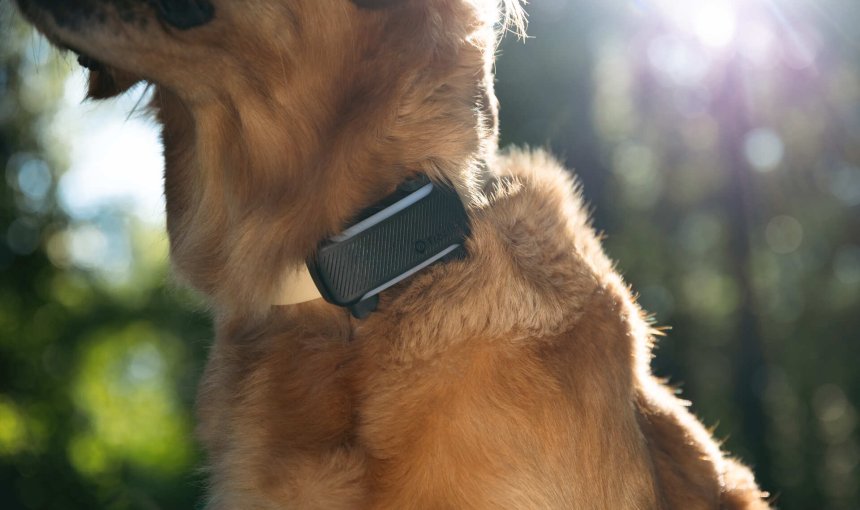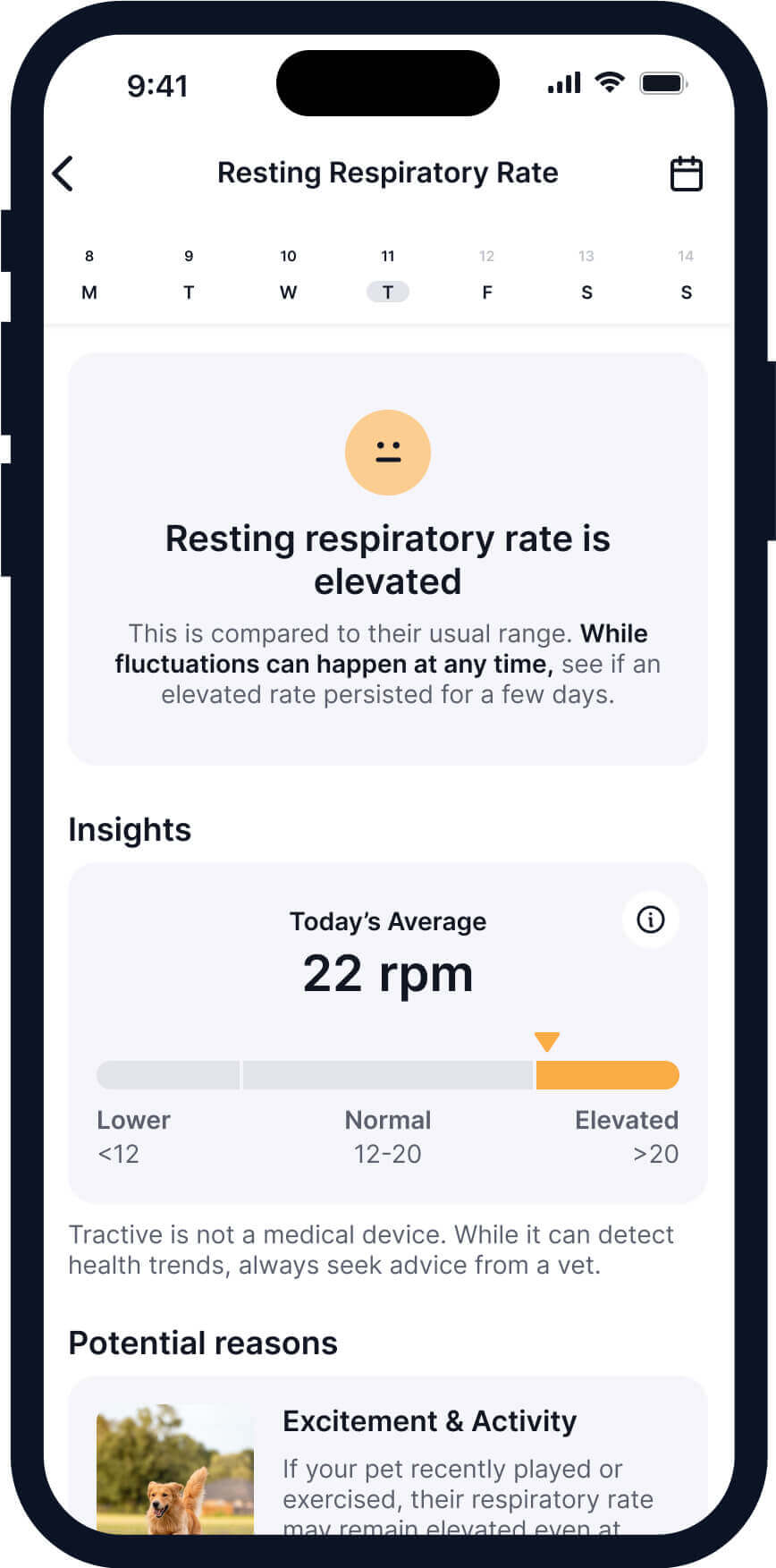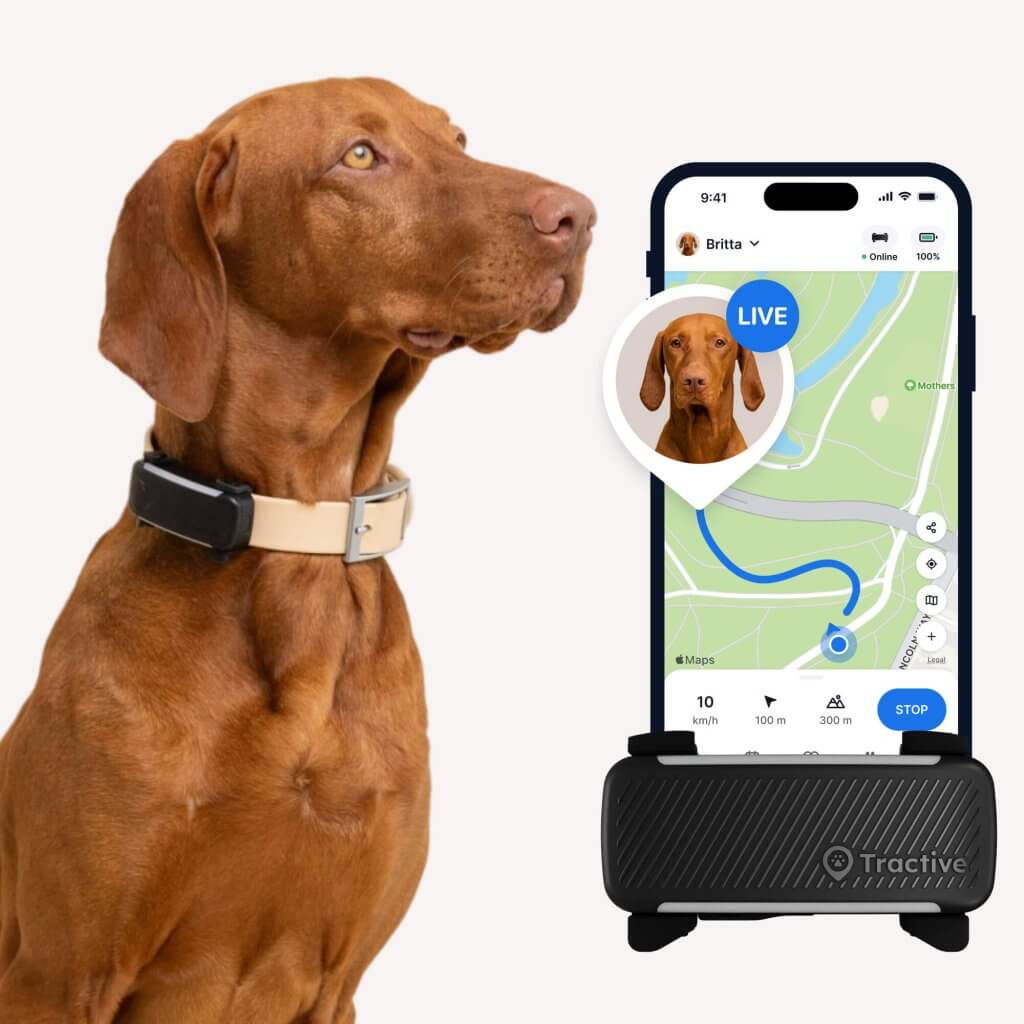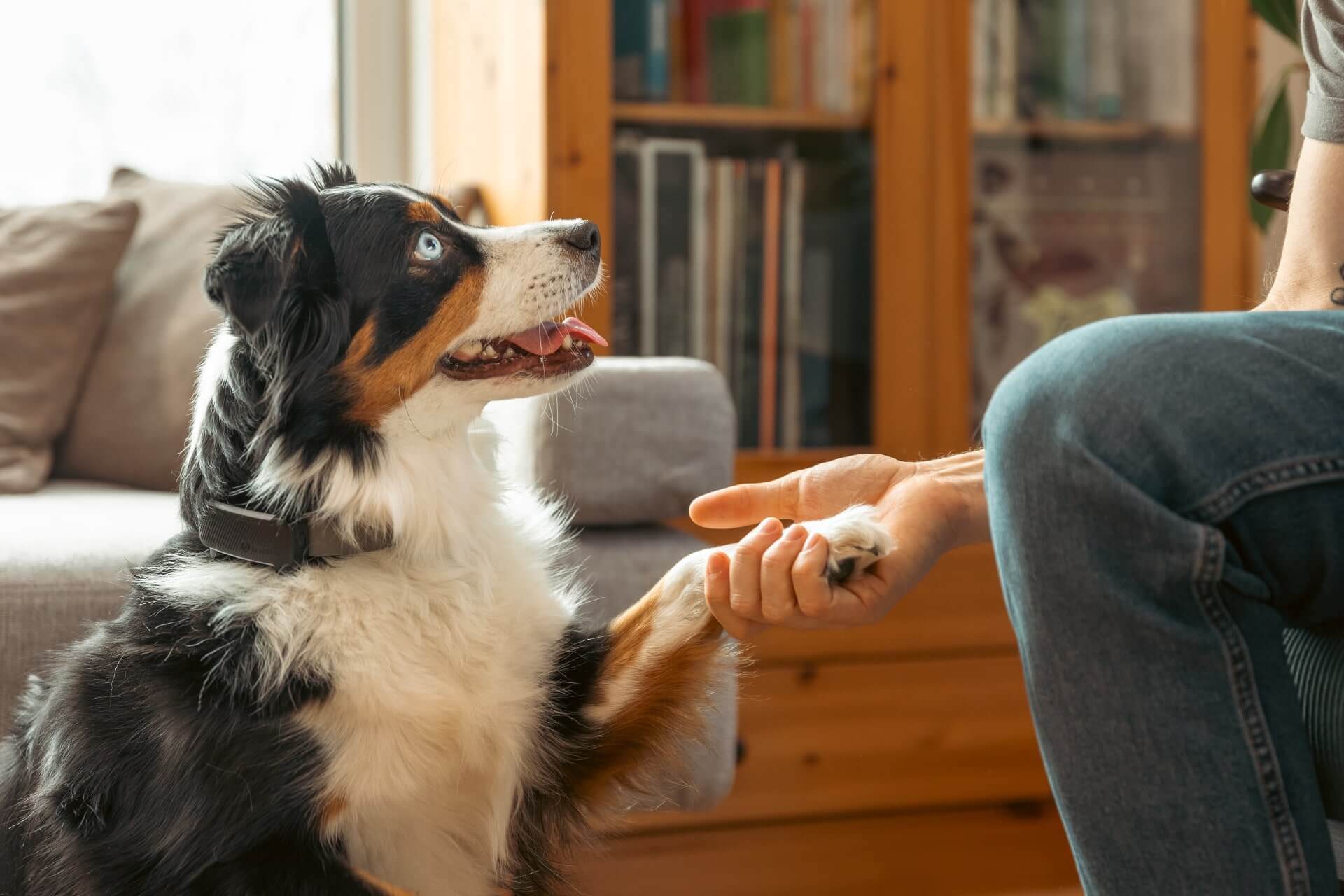 Approved by Dr. Dwight Alleyne, DVM
Approved by Dr. Dwight Alleyne, DVM Dog Respiratory Rate Guide: What Your Dog’s Breathing Means
With everything you do to keep your dog healthy, you want to make sure you aren't missing out on the subtler, less obvious signs - like changes in your dog's respiratory rate. Our in-depth guide has you covered.

Your dog’s respiratory rate is an important vital sign linked to their overall health. It’s so important, in fact, that monitoring it regularly and staying on top of changes can actually help you and your vet spot illness earlier, which can lead to a better health outcome for your pup. That’s why it’s invaluable to have your pet’s health data right at your fingertips.
So in this post, we’re going to cover what’s a normal respiratory rate for dogs, what are the signs something could be wrong, and how tracking your buddy’s respiratory rate with a dog tracker like Tractive is key to picking up on a health issue early on. Let’s get started.

Always know your buddy is healthy & safe
Read more- Dog respiratory rate meaning
- Why your dog’s respiratory rate matters
- What is a normal dog respiratory rate?
- What is an abnormal respiratory rate for a dog?
- How to check your dog’s respiratory rate
- What affects your dog’s respiratory rate?
- Labored breathing in dogs
- Low respiratory rate in dogs
- Stay on top of your dog’s health by monitoring their respiratory rate
- How Tractive’s dog respiratory rate monitoring feature works
- Conclusion on dog respiratory rate monitoring
Dog respiratory rate meaning
Dog respiratory rate (RR) refers to the number of breaths a dog takes per minute. Also known as a dog’s breathing rate, it’s a key vital sign and one of the simplest way to understand how well their body is functioning.

Why your dog’s respiratory rate matters
Is it really important to know your dog’s respiratory rate? Yes! By monitoring your dog’s breathing rate regularly, you’re more likely to:
- Stay on top of early warning signs that something may be off
- Monitor their treatment and manage medications
- Reduce emergencies, prevent hospital stays
- Understand their baseline so you can spot changes more easily
Most importantly, if you notice something abnormal with your dog’s breathing rate, it’s key to get them into the vet on time to diagnose and treat any health issues. As VCA Animal Hospitals write: “An increase in your dog’s breathing rate while resting is an important early clue that your pet may be developing heart failure— and needs to see your veterinarian.”
What is a normal dog respiratory rate?
To understand a dog’s normal respiratory rate, we use resting respiratory rate, or the number of breaths a dog takes per minute while asleep or resting (calm). A normal dog respiratory rate while resting/sleeping is between 15-30 breaths per minute1. This is true for:
- normal dogs (and cats as well!)
- dogs with asymptomatic heart disease and
- dog with heart failure (but who have it under control thanks to their medication)
Anything consistently above or below that range can signal stress, pain, overheating, or an underlying health issue.
What is an abnormal respiratory rate for a dog?
If your dog’s resting respiratory rate is consistently above 30 breaths per minute, it’s considered elevated and abnormal. But for some dogs, a rate of less than 30 breaths per minute might still be considered high and abnormal. Talk to your vet to determine exactly what’s normal or abnormal for your pet.
How to check your dog’s respiratory rate
Checking your dog’s respiratory rate is simple and only takes a minute. Make sure your dog is calm and resting — ideally asleep.
- Watch or lightly place a hand on their chest and count how many times it rises in 30 seconds.
- Multiply that number by 2 to get breaths per minute (BPM).
- Repeat the measurement a couple of times for accuracy.
- Take note of any unusual signs like shallow, rapid, or effortful breathing.
Measuring your dog’s RRR regularly helps you spot changes early, but you don’t have to do it all manually. Tractive’s Health Monitoring feature automatically tracks your dog’s normal vital signs, sleep and activity and alerts you if something seems off — giving you peace of mind around the clock.

Keep track of your dog’s daily adventures
Follow every step with unlimited range Live Tracking. Get alerts if they wander too far. Keep them happy & healthy with Activity & Sleep Monitoring. Get Health Alerts if something seems off.
What affects your dog’s respiratory rate?
Many factors can affect a dog’s respiratory rate. In general there are normal factors (not a cause for concern) and medical conditions (when your dog may need to see a vet). And some may even be emergencies (when your dog needs urgent medical treatment) – so watch out for any signs of illness in dogs.
Normal factors
- Temperature: Dogs pant to regulate their body temperature. So if it’s hot outdoors, they might pant more to cool down.
- Activity level: Panting is a normal response after vigorous exercise – and even more so among high-energy dog breeds. But it should taper off after a bit of time to cool down.
- Emotional state: Dogs may breathe faster when they’re excited, stressed out, anxious, or frightened by something in their environment.
- Age: Puppies, likewise due to their smaller lung capacity and faster metabolisms, breathe faster than adult and senior dogs. However, senior dogs tend to be vulnerable to age-related health conditions, like heart or respiratory problems. Which could also make them breathe faster.
- Size: Smaller dogs tend to breathe faster than medium- and large-sized dogs. This could be due to their smaller lung capacity and faster metabolisms.
- Breed: Brachycephalic dog breeds tend to have difficulties breathing in general because of how their skulls and snouts are shaped. They may be more vulnerable to sleep-related breathing disorders, like sleep apnea.
Medical conditions
No matter how much exercise they’ve gotten, how excited they are, or how hot (or cold) it is outdoors – your dog’s breathing should return to normal after a bit of rest. But if it doesn’t, it could be due to:
- Pain or chronic stress
- Foreign objects stuck in your dog’s throat
- Excess weight
- Cardiovascular issues like heart disease or heart failure
- Respiratory/lung issues
- Allergies
- Infections from viruses, bacteria or even fungi
- Tumors or growths
- Injuries to your dog’s windpipe or chest
- Parasites
- A collapsing trachea
- Heat stroke
- Neuromuscular disease
- Poisoning
Many of the conditions above can count as a medical emergency – so get your dog to a vet right away if you notice alarming symptoms like the ones outlined below. Or if there is any new, persistent or concerning change in their breathing.
Labored breathing in dogs
Labored breathing in dogs, also known as shortness of breath or dyspnea is considered a veterinary emergency and requires immediate care2. Get your dog into the vet asap if you notice any of these signs of labored breathing in dogs:
- A respiratory rate of > 40 breaths per minute
- Persistent panting
- Rattling or gasping noises as your dog tries to breathe
- Stretching of the neck to breath
- Bluish tongue or gums
- Wide, dilated pupils
- Heaving motions around your dog’s abdomen and ribs
- Persistent coughing (especially at night)
- A horse sounding bark
- Restlessness or pacing
- Spreading legs/elbows out to breath (wide stance)
- Resistance to exercise
Normal panting vs labored breathing in dogs
Normal panting in dogs looks like: fast, shallow breaths after a play session or being in the heat. Their body appears normal and the panting serves to cool them down.
Labored breathing in dogs, on the other hand, looks like: your dog struggling to breathe (see signs above).
Respiratory distress in dogs
Labored breathing is a key sign of respiratory distress in dogs – a medical emergency where they are struggling to get enough oxygen. If your dog is having difficulty breathing, seek veterinary care.
Low respiratory rate in dogs
Sometimes, a slower aka low respiratory rate in dogs can indicate that your dog is relaxed, getting fitter from exercise or simply adjusting to the cold (and trying not to lose warmth by breathing more). But other times, a dog breathing slower than the normal 15-30 breaths per minute could indicate that something’s wrong.
A low respiratory rate in dogs could be caused by:
- Medications or toxins
- Brain issues
- Heart disease
- Lung disease
- Metabolic or electrolyte imbalances
- Airway obstruction
- Breed specific tracheal collapse
Stay on top of your dog’s health by monitoring their respiratory rate
As you’ve probably learned by now, respiratory rate in dogs can be a strong indicator of illness or health, so it’s a good idea to keep an eye on it. And by knowing what’s normal for your dog, you can spot problems early. Tracking their usual resting respiratory rate helps you recognize changes quickly — before symptoms become serious.
Luckily it’s never been easier to stay on top of your dog’s vital signs. The Tractive GPS dog tracker with Health Monitoring can support you by automatically alerting you to unusual patterns in your dog’s sleep and activity, which often shift alongside breathing changes. This way, you can stay ahead of potential issues and keep your pup feeling their best.

How Tractive’s dog respiratory rate monitoring feature works
Tractive’s smart technology goes even deeper than basic location and activity tracking. With Tractive’s Respiratory Rate monitoring, you can establish their baseline breathing rate and see how this changes from day to day. Here’s how it works:
- Leave your tracker on for a week for up to 8 hours a day, including during periods of rest.
- Let Tractive establish their baseline resting respiratory rate (RRR).
- Check daily for fluctuations and keep an eye out if you notice a consistent decrease or increase in their RRR.
- You’ll get a health alert in case something seems off with your dog’s breathing or activity.
So you can get your dog over to your vet for a checkup much before any budding health issue has a chance to worsen.
Conclusion on dog respiratory rate monitoring
As we’ve learned, your dog’s respiratory rate is one of the most important measures of their health and wellbeing. Keeping an eye on your dog’s respiratory rate is a simple, powerful way to protect their health — and now, thanks to smart tech, it’s easier than ever. An elevated resting respiratory rate in dogs is often a signal of a health issue, so be sure to visit your vet if you notice any worrying changes in your dog’s breathing. By understanding what’s normal for your pup and watching for changes, you’re giving them the best chance at early detection, faster treatment, and a happier, healthier life.
Your furry friend’s health and wellbeing means as much as to us as it does to you. So we’ve made it a priority to only share medically-relevant content on our blog. This post was checked, double-checked, and medically verified by Georgia-based vet, Dr. Dwight Alleyne.

Dr. Dwight Alleyne, DVM
Originally from Long Island, New York, Dr. Alleyne began his career at a no-kill animal shelter before becoming a licensed veterinary technician. He graduated from Cornell University Veterinary College in 2006 and completed an internship at Purdue University. Now practicing in Georgia, Dr. Alleyne specializes in soft tissue surgery and ultrasounds. He also writes pet health articles on his website, “The Animal Doctor Blog” (www.anmldrblog.com).



